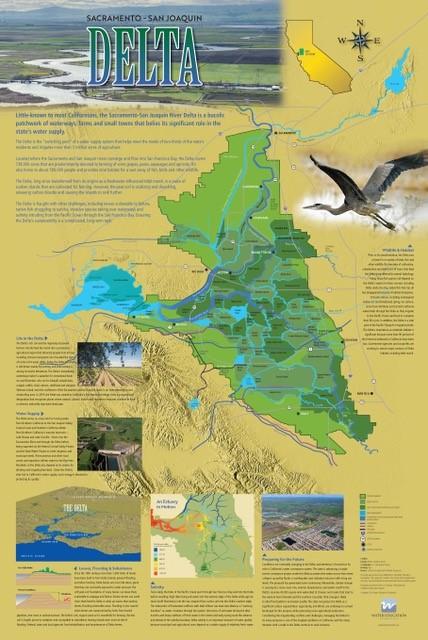With Delta Smelt All But Gone in the Wild, A First-Ever “Hatch-and-Release” Effort Aims to Save Them From Extinction
WESTERN WATER NOTEBOOK: Experimental releases of finger-size fish into Sacramento-San Joaquin Delta inspires hope, but also skepticism, about the smelt's future
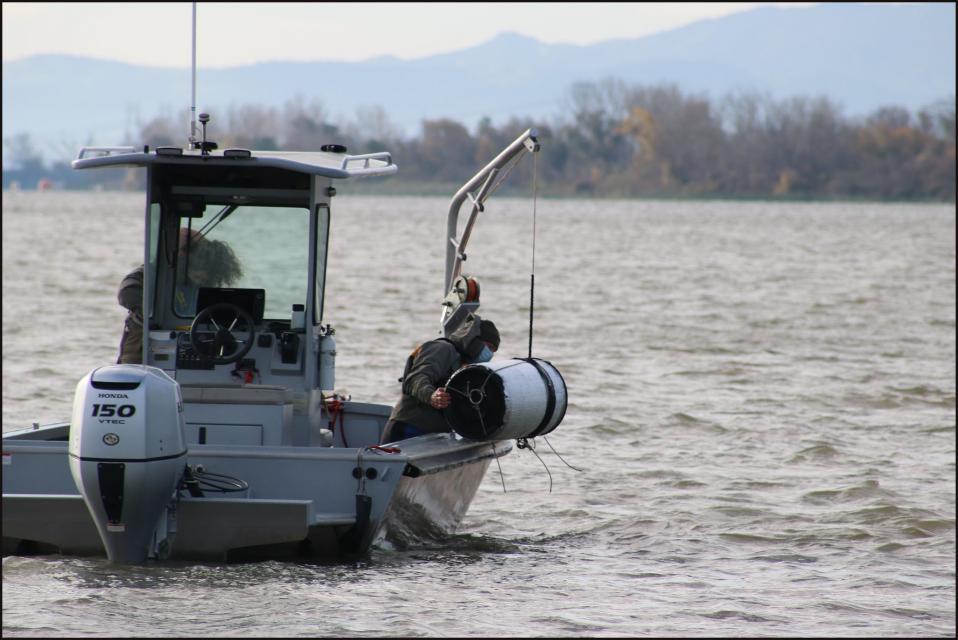 In the vast labyrinth of the West
Coast’s largest freshwater tidal estuary, one native fish species
has never been so rare. Once uncountably numerous, the Delta
smelt was placed on state and federal endangered species lists in
1993, stopped appearing in most annual sampling surveys in 2016,
and is now, for all practical purposes, extinct in the wild. At
least, it was.
In the vast labyrinth of the West
Coast’s largest freshwater tidal estuary, one native fish species
has never been so rare. Once uncountably numerous, the Delta
smelt was placed on state and federal endangered species lists in
1993, stopped appearing in most annual sampling surveys in 2016,
and is now, for all practical purposes, extinct in the wild. At
least, it was.
Then, in December, state and federal biologists released more than 12,000 adult Delta smelt, born about a year earlier in a University of California, Davis laboratory, into the lower Sacramento River in an effort to draw the species away from the brink of oblivion. Another batch of smelt was released in January and three more in early February.
“We might do larger releases if this is successful.”
~Jana Affonso, field supervisor with U.S. Fish and Wildlife Service
By giving the Delta smelt’s population a slight boost, the project – its managers hope – will buy precious time for sluggish habitat improvement efforts to make the Sacramento-San Joaquin Delta once more a livable place for the imperiled fish.
Jana Affonso, an assistant field supervisor with the U.S. Fish and Wildlife Service, said the program is considered an experiment, and the plan is to continue releasing smelt for three years.
“Beyond that, we might do larger releases if this is successful,” she said.
Embroiled in Controversy
The Delta smelt has been embroiled for years in controversies over how to sustainably use Delta water. Environmental restrictions, including protections for fish, can force temporary shutdowns of the pumping stations that deliver this water to millions of people and vast sprawls of farmland. For this reason, the tiny fish has become a political lightning rod and, for many people, a symbol of the economic costs of protecting endangered species.
But it’s not just environmental organizations that want to restore the Delta smelt. Jennifer Pierre, the general manager of the State Water Contractors, which represents agencies that take water from the State Water Project, said she’s hopeful that supplementing the wild Delta smelt population could help the fish reproduce successfully and increase their population.
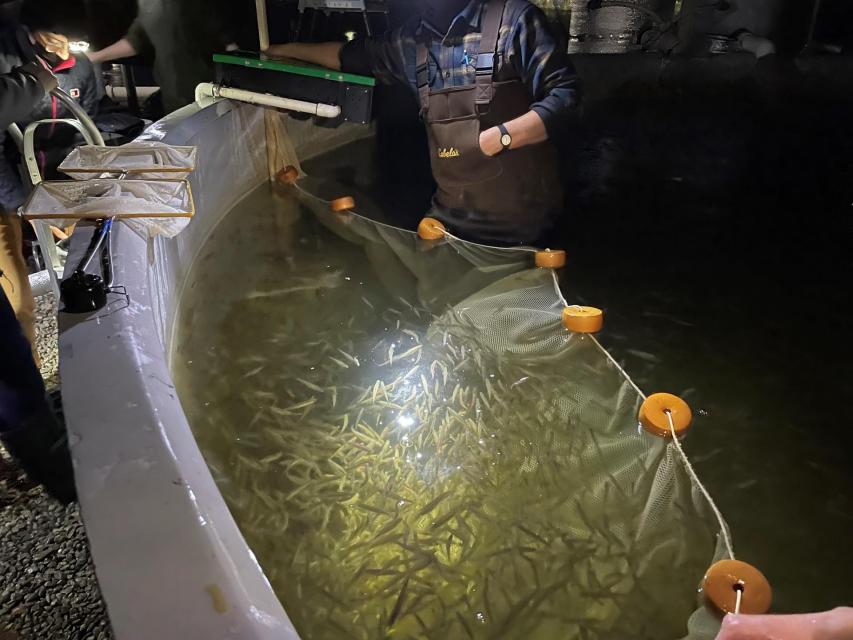 While releasing smelt into the
estuary could complicate the operation of the Delta pumps, it’s a
risk worth taking, Pierre said. More Delta smelt in the wild
could mean more opportunities to study them and better understand
the sorts of habitat restoration programs that might benefit the
species in the long run. The fact that a Delta smelt was already
salvaged at the pumping stations many miles from the release
site, Pierre said, is “a glimmer of hope.”
While releasing smelt into the
estuary could complicate the operation of the Delta pumps, it’s a
risk worth taking, Pierre said. More Delta smelt in the wild
could mean more opportunities to study them and better understand
the sorts of habitat restoration programs that might benefit the
species in the long run. The fact that a Delta smelt was already
salvaged at the pumping stations many miles from the release
site, Pierre said, is “a glimmer of hope.”
“It means they aren’t dying as soon as they’re released,” she said. “That’s what we thought would happen, but they’re moving long distances around the Delta. This is really exciting.”
The releases, which had put a total of 32,000 Delta smelt into the water as of Feb. 8, were conducted strategically to increase the odds that the lab-born smelt survive long enough to spawn. Delta smelt have a natural lifespan of about one year, spawning shortly before dying, and the hatchery fish — born and raised at the U.C. Davis Fish Conservation and Culture Laboratory on the southern edge of the Delta northwest of Tracy — were nearing sexually maturity when released. They were also let go in the northern Delta, where they naturally spawn. This eliminated the trans-Delta migration that wild smelt must undertake and which, thanks to a variety of ecosystem stressors, is a perilous journey for the small fish.
While the project is designed to give the Delta smelt an edge at every turn, some scientists think it will be about as helpful as a lifeline tethered to a sinking ship.
“It’s probably not going to be effective at doing what people hope it will do – stimulate the population to reproduce naturally again,” said Andrew Rypel, a fish biologist and associate professor at U.C. Davis.
Kate Poole, a water law attorney with the Natural Resources Defense Council, called the Delta smelt release program “a near-term Band-Aid” solution.
Historically, the Delta smelt was among the most numerous fish species in the estuary, making up a large portion of the catch in an annual sampling program when it first began in the 1960s. In those days, the California Department of Fish and Wildlife’s Fall Midwater Trawl Survey caught hundreds, and often well over a thousand, of the finger-sized fish each year. In the 1980s, the Delta smelt index, as the survey catch is termed, began to dip significantly, and in the early 2000s, the numbers dropped off a cliff. The trawl survey – used as a population gauge for several native fishes – began catching just a few dozen Delta smelt per year. The Delta smelt index spiked for a season in 2011, thanks to a wet winter that improved spawning success, but crashed again during the last big drought. Since 2018, the survey has not caught a single one.
“It’s probably not going to be effective at doing what people hope it will do – stimulate the population to reproduce naturally again.”
~Andrew Rypel, a fish biologist and associate professor, University of California, Davis
The fish are now so few and far between that they may be near their minimum viable population – a critical mass threshold below which sustainable reproduction is impossible and extinction inevitable. U.C. Davis aquatic biologist Peter Moyle said the project, though it doesn’t correct any habitat shortcomings, could pull the Delta smelt out of this extreme danger zone by enhancing their spawning success this winter.
After that, all bets are off.
“If the offspring of these fish don’t survive, then you’re faced with some questions about the effectiveness of the program,” Moyle said.
As of late January, biologists had caught more than a dozen of the released fish using a fine-meshed trawl net – meaning they survived at least three weeks in the wild, according to Stephanie Fong of the California Department of Fish and Wildlife, which is running the project with the U.S. Fish and Wildlife Service, the California Department of Water Resources and the U.S. Bureau of Reclamation. The next important milestone could come this summer, Fong said. If sampling efforts scoop any Delta smelt from the estuary then, tissue samples from the fish will undergo genetic analysis.
“That will tell us if they’re offspring of the fish we released,” she said.
What Ails Delta Smelt
What ails the Delta smelt is simple: The ecosystem they are adapted to has been drastically altered. The Delta’s wetland habitat has been drained and developed, and water exports from the estuary have steadily increased from the 1960s through the early 2000s. These factors, combined with contaminated runoff, increasing atmospheric temperatures and invasive species, have transformed the Delta from an estuary friendly to salmonids and smelt into something resembling a warm-water lake, where other fish species – including a little-known invasive called the Mississippi silverside that gorges on smelt eggs and larvae – thrive.
Invasive clams have also taxed the ecosystem. They arrived sometime last century, presumably crossing the Pacific as larval stowaways in cargo ship ballast water, which vessels discharge upon reaching a new port, and by the 1980s began having dire ecological impacts. Like all bivalves, clams are filter feeders, and as they strained more and more organic matter from the water, native fishes were left with less and less to eat.
“The pelagic productivity of the system has declined because of the clams,” Moyle said. “The water is clearer, there’s less phytoplankton and zooplankton and in general very little food for Delta smelt.”
In effect, biomass from the water column has been transferred to the bottom of the Delta, sequestered in the shells and flesh of millions of invasive clams. The new hatch-and-release program, Rypel said, doesn’t change these conditions.
What to know about Delta smelt
-
Size: 2-3 inches
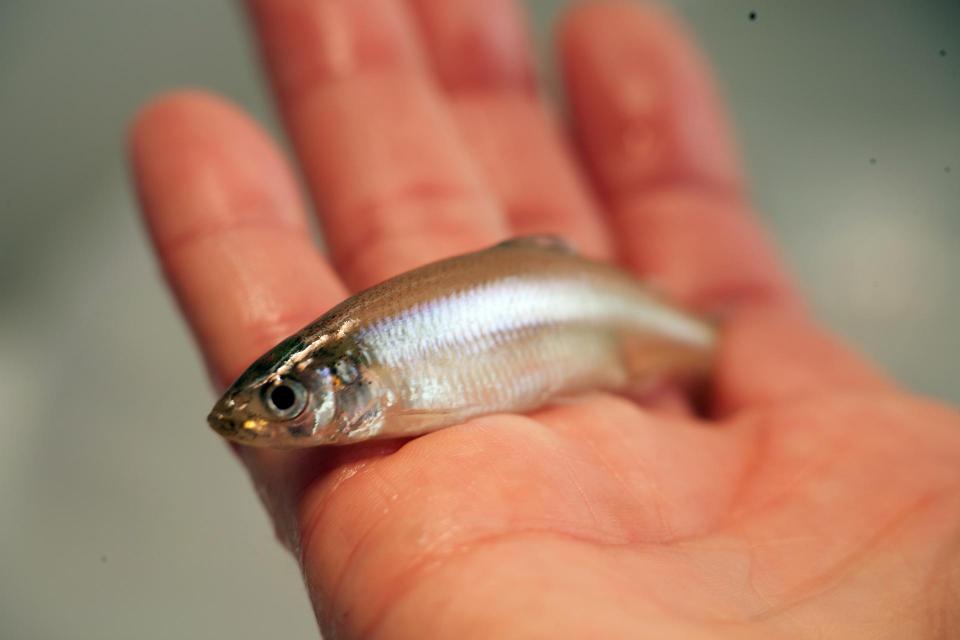
- Lifespan: About a year
- Food: Primarily planktonic copepods, cladocerans and amphipods.
- What’s unique: They smell like cucumbers.
- Endangered species status: Listed as threatened in 1993 under state and federal Endangered Species Acts; in 2009 changed to endangered under California’s Endangered Species Act.
But the Department of Water Resources is working on restoring thousands of acres of the Delta smelt’s habitat, according to Jason Ince, a department spokesman. He said his agency also “is adaptively managing how much water is coming into different parts of the Delta to improve habitat conditions for the species.” The smelt releases, he said, could keep the species afloat while these improvements take effect.
When it was more plentiful, the Delta smelt was considered by scientists a good indicator species for the health of the ecosystem – like a canary in a coal mine. Today, it’s more like the spotted owl, the raptor scorned by Northwest loggers after being listed as endangered in 1990, giving new protections to old trees. The Delta smelt received its state endangered status in 2009, and since then it has been a source of contention between water users and environmentalists. That’s because water deliveries that regions south of the Delta depend on may be disrupted if smelt are killed at the pumps. This particular chain of events is rare, though. The state’s current year’s limit on harming Delta smelt at the pumps is 11. Poole says that’s so high as to be “basically meaningless.” As of early February, just one smelt had been salvaged from the pumping stations, meaning ten more can be found before restrictions take effect.
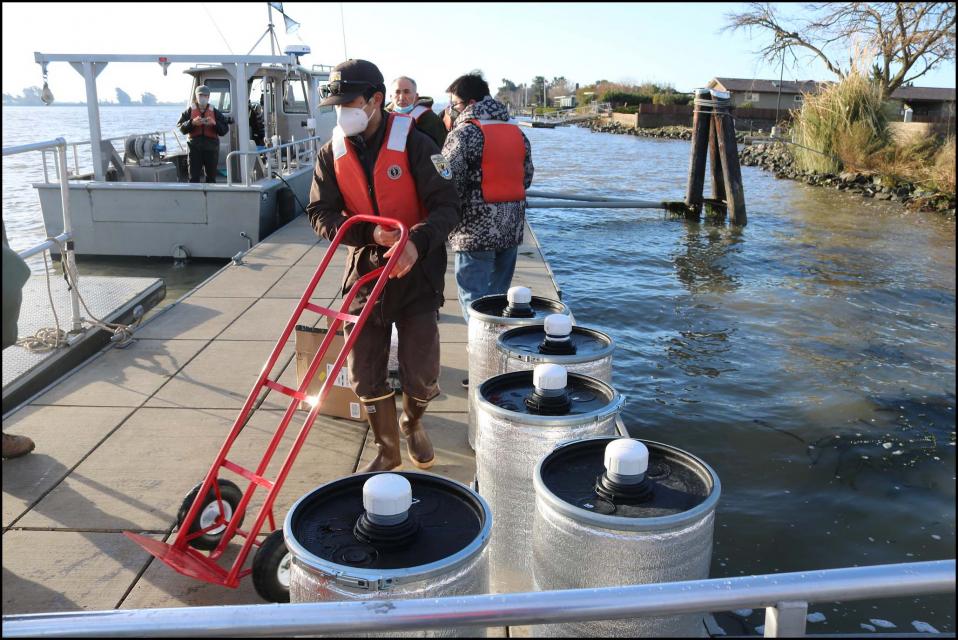 Releasing the fish into the wild
could increase the odds that they will be sucked into the pumping
stations. In fact, the lone smelt killed at the pumps in January
was a laboratory-born fish. Still, state officials believe this
is overall a negligible concern.
Releasing the fish into the wild
could increase the odds that they will be sucked into the pumping
stations. In fact, the lone smelt killed at the pumps in January
was a laboratory-born fish. Still, state officials believe this
is overall a negligible concern.
“Given the small number of fish being released, we found it wouldn’t increase the population enough to significantly increase the chances of them getting harmed at the pumps,” said Brooke Jacobs, a state Fish and Wildlife environmental program manager.
In a December press release from the U.S. Fish and Wildlife Service, the agency’s local regional director, Paul Souza, expressed hope that resource managers “can help recover and conserve [Delta smelt] for future generations.”
But a full recovery seems impossible. In a 2019 report, five scientists – including Moyle and Rypel – called the changes to the Delta ecosystem of the past 50 years “irreversible.” Short of the unlikely prospect of securing an “environmental water right” for the Delta ecosystem of between 1 million and 2 million acre-feet per year, the biologists wrote, the Delta smelt is probably doomed. Worse, they warned, other native fishes may follow in the smelt’s path.
The experimental program guarantees for at least a while that the species remains with us.
“As long as there’s a hatchery population,” Moyle said, “Delta smelt won’t be technically extinct, though they might be extirpated from the wild.”
Alastair Bland is a freelance writer who has covered a wide range of topics including water, climate change, fisheries, marine conservation and research, and agriculture. He also curates the Foundation’s Aquafornia daily water news roundup. Please send any comments on the article to Doug Beeman, Deputy Director, News & Publications. Know someone else who wants to stay connected with water in the West? Encourage them to sign up for Western Water, and follow us on Facebook, Twitter, LinkedIn and Instagram.









